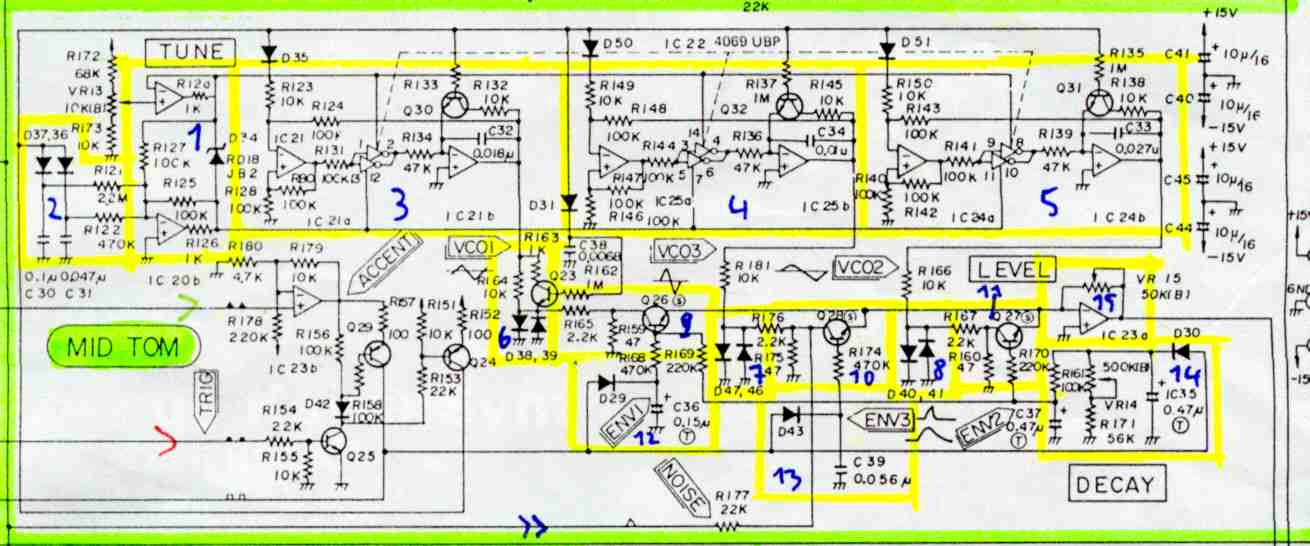
Toms

> = Trig |
> = Accent or Velocity (from D/A) |
>> = Tom Noise |
Low, Mid and High Toms have similar circuitry except that VCO's have different main tunings. The following description takes Mid-Tom as representative.
Mid Tom is composed around three VCO's and noise, called Tom noise in this case. Tom noise (>>) is a modified signal from the common noise generator.
VCO's have similar circuitry except that charging capacitors C32,33,34 have different capacitance so that they can oscillate at different frequency. VCO-3 (part 4) runs at highest frequency, VCO-2 (part 5) runs at lowest.
When TRIG (>) is applied to the base of Q25, ENV-4 (part 2) is started by Q24 collector, releasing a pitch modulation of all VCO's (parts 3,4,5) by driving the Control Voltage Generator (part1). Control Voltage can be also adjusted manually by VR13 (TUNE). There's also a positive pulse at the bases of Q30,31,32 , discharging C32,33,34 and resetting VCO's to sync them together. Circuit configurations of VCO's are the same as used in Snare Drum. Refer to this section for more information.
Each VCO output passes through a diode clipper (parts 6, 7 and 8) to get sine waves. The clipper of VCO-1 is also controlled by TRIG (with associated envelope C38 and VCA Q23) to cause a slow change from square (low resistance in collector-emitter path, hard clipping) to sine (softer clipping).
Each modified oscillator signal passes through a VCA (Q26,27,28; see parts 9,10 and 11) with associated envelope (parts 12,13 and 14). ENV-2 (for VCO-2) is adjustable in Decay-Time (VR17). So you hear just one oscillator after some milliseconds, when you adjust longer decay times. VCO-3 signal is also mixed with Tom Noise (>>) before reaching the VCA. This causes a more natural sound in the attack phase of this instrument.
Finally VCO-signals are mixed and amplified at IC23a (part 15) to provide level control.